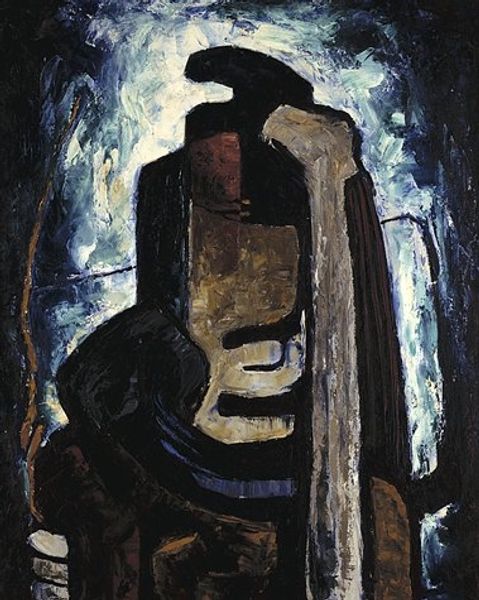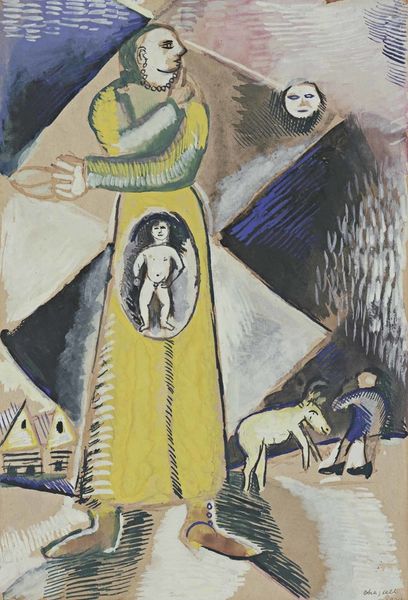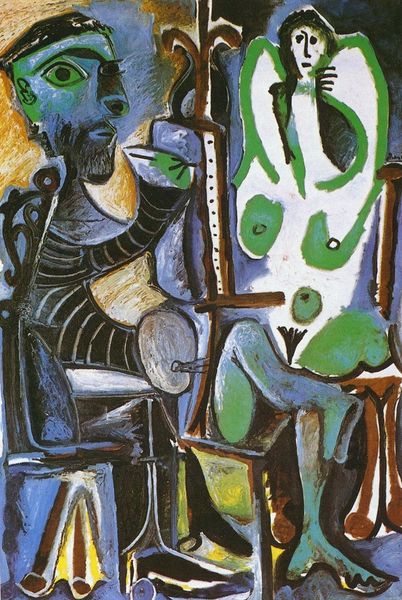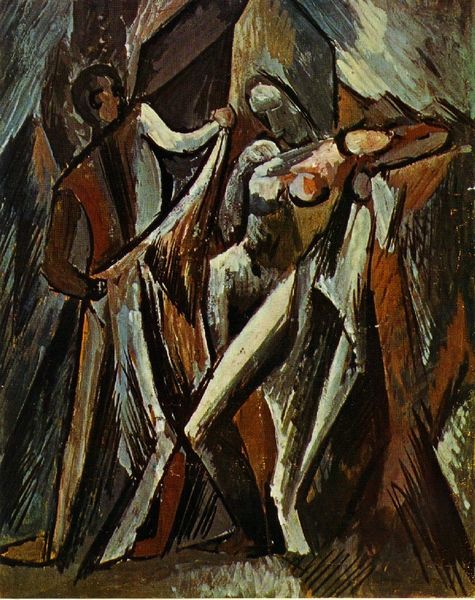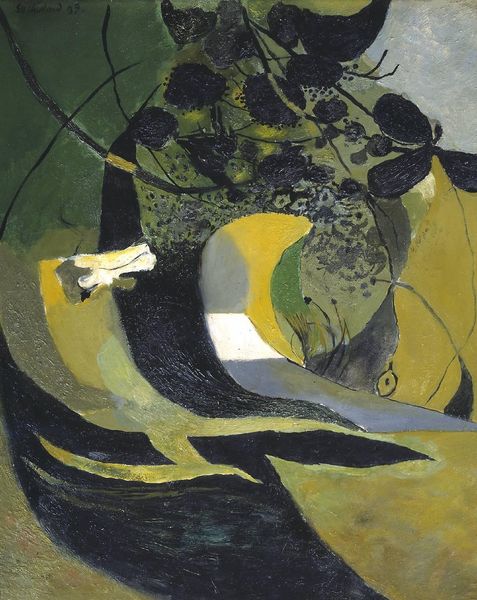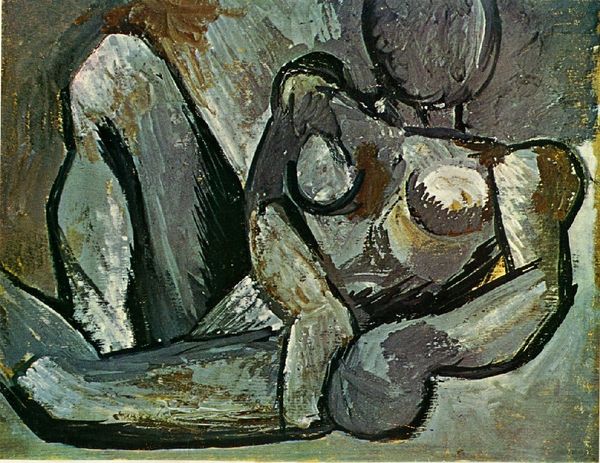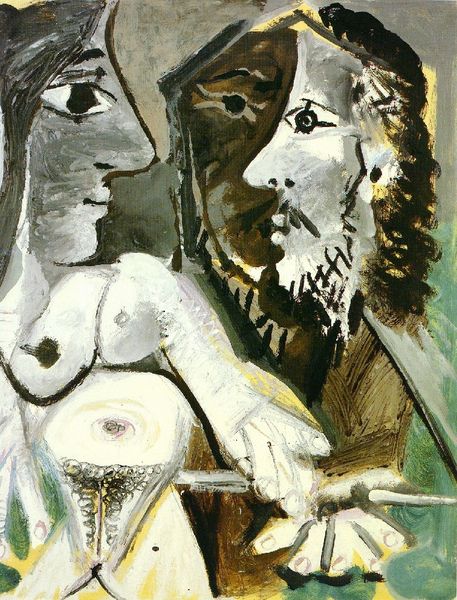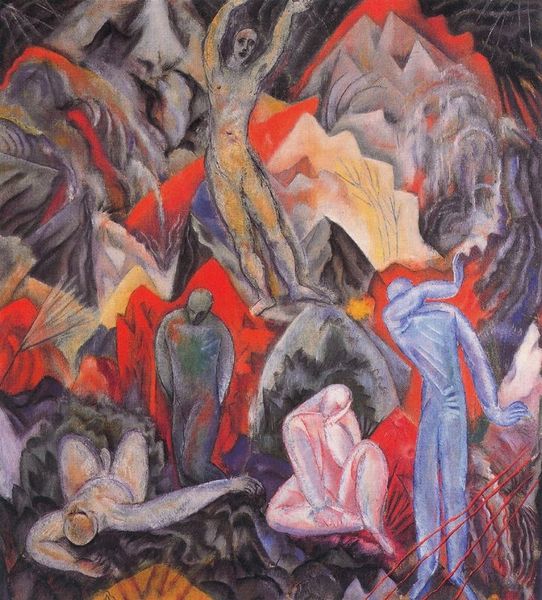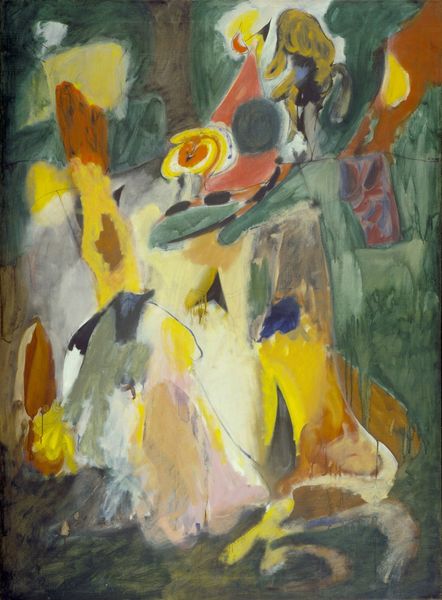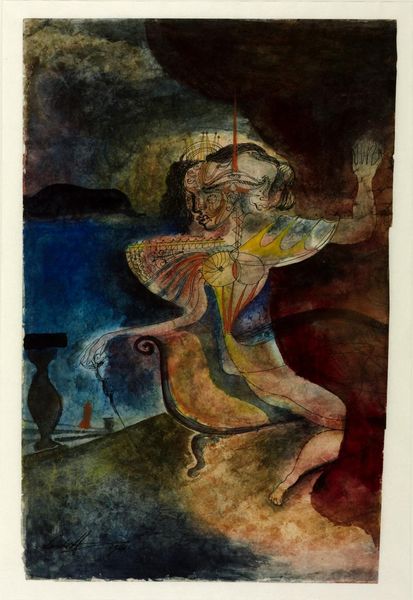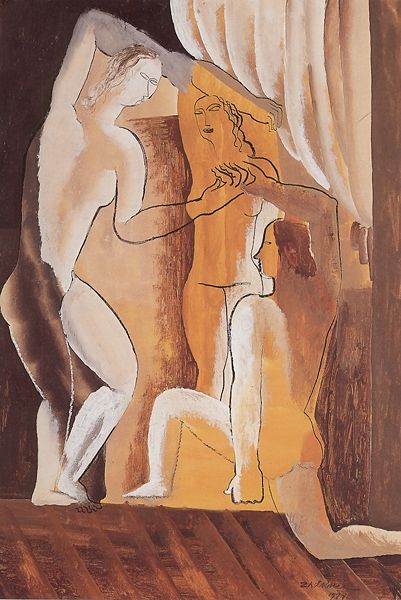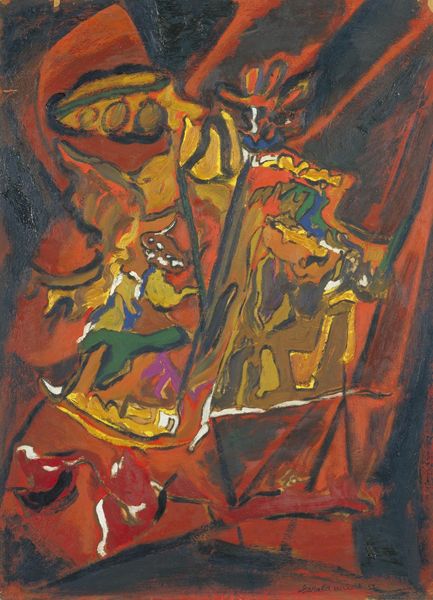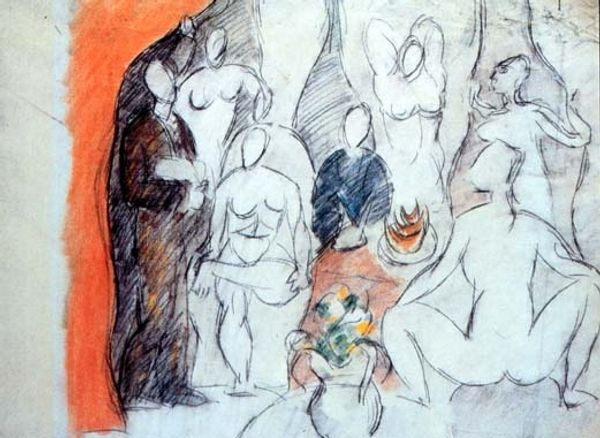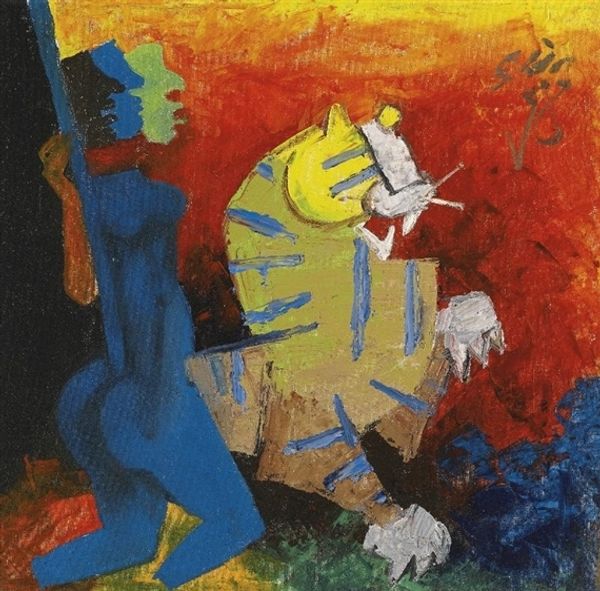
Copyright: Pablo Picasso,Fair Use
Curator: Well, here we have Pablo Picasso's 1961 painting, "The Luncheon on the Grass." It's an oil painting, and immediately striking. Editor: I’m drawn in by the thickness of the paint. It's applied so heavily, almost sculpted onto the canvas. You can practically feel the texture of the scene, that earthiness is compelling. Curator: The title itself references Manet's scandalous painting of the same name, which Picasso returned to as a theme repeatedly late in his career. The work interrogates the art historical canon and its treatment of women in the artistic representation of nature and leisure. Editor: Indeed, that manipulation of paint echoes the way class is handled in these paintings of wealthy society that Picasso plays upon. Think about the industrial production of these paints; there are so many class layers at play here. It feels much more rough, than Manet. Curator: The distorted forms and fractured perspective are of course hallmark Picasso. How does his particular brand of Cubism impact the gender politics here, in your opinion? Editor: It seems to objectify and liberate. This abstracted form and the texture are freeing of social norms. We see this manipulation and repurposing of material transformed, liberated, like in many industrial situations. What can these figures be transformed into? Curator: The female figures seem both powerful and vulnerable through Picasso's lens, almost as if he's exploring the complicated gaze itself. Picasso is wrestling with his legacy, recontextualizing an art historical moment in light of a rapidly changing world. This piece offers a sharp view into what’s next in culture. Editor: For me, looking closely at the materiality, you almost feel the brushstrokes themselves are acting as witnesses. Each application is part of this dialogue between making and meaning, revealing the socio-historical moment that is art itself. It seems the materials are shouting in contrast with what it references. Curator: Ultimately, "The Luncheon on the Grass" remains a fascinating case study in how an artist can both participate in and critique artistic tradition. Editor: It challenges our understandings of beauty and art creation while reminding us how connected materiality and societal changes are in any piece of work.
Comments
No comments
Be the first to comment and join the conversation on the ultimate creative platform.
